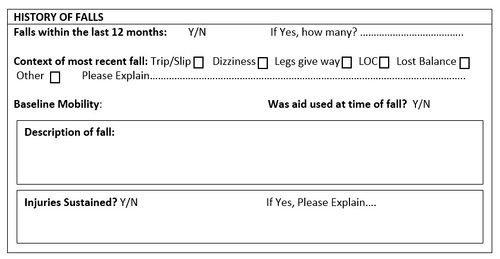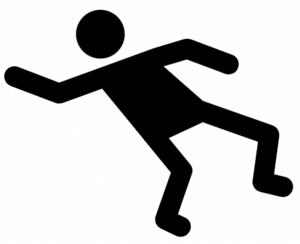Not known Incorrect Statements About Dementia Fall Risk
Dementia Fall Risk for Dummies
Table of ContentsDementia Fall Risk Fundamentals ExplainedThe Basic Principles Of Dementia Fall Risk All About Dementia Fall RiskGetting The Dementia Fall Risk To Work
A fall danger evaluation checks to see just how most likely it is that you will certainly fall. It is primarily provided for older grownups. The assessment generally consists of: This includes a series of inquiries about your total health and if you've had previous drops or issues with equilibrium, standing, and/or walking. These tools examine your stamina, equilibrium, and gait (the means you stroll).STEADI consists of screening, examining, and treatment. Treatments are recommendations that may lower your risk of dropping. STEADI includes three steps: you for your threat of succumbing to your threat elements that can be enhanced to attempt to stop falls (for example, balance issues, impaired vision) to reduce your danger of dropping by using effective strategies (as an example, supplying education and resources), you may be asked several questions consisting of: Have you fallen in the previous year? Do you feel unstable when standing or strolling? Are you stressed over falling?, your company will certainly evaluate your stamina, balance, and gait, utilizing the following fall analysis tools: This examination checks your stride.
After that you'll sit down once more. Your supplier will certainly examine how much time it takes you to do this. If it takes you 12 secs or even more, it might indicate you are at greater danger for a loss. This test checks toughness and equilibrium. You'll rest in a chair with your arms went across over your chest.
The settings will obtain tougher as you go. Stand with your feet side-by-side. Relocate one foot midway forward, so the instep is touching the large toe of your other foot. Move one foot totally before the other, so the toes are touching the heel of your various other foot.
The Basic Principles Of Dementia Fall Risk
A lot of drops take place as an outcome of multiple adding elements; consequently, managing the danger of dropping starts with identifying the variables that contribute to drop danger - Dementia Fall Risk. Several of one of the most relevant threat elements consist of: History of prior fallsChronic medical conditionsAcute illnessImpaired gait and equilibrium, lower extremity weaknessCognitive impairmentChanges in visionCertain risky drugs and polypharmacyEnvironmental factors can also boost the threat for falls, including: Insufficient lightingUneven or harmed flooringWet or unsafe floorsMissing or harmed handrails and get hold of barsDamaged or improperly equipped tools, such as beds, mobility devices, or walkersImproper use assistive devicesInadequate supervision of individuals staying in the NF, consisting of those who display hostile behaviorsA effective autumn threat monitoring program calls for a comprehensive scientific evaluation, with input from all members of the interdisciplinary team

The care plan must additionally consist of interventions that are system-based, such as those that promote a safe atmosphere (ideal lights, hand rails, get bars, and so on). The efficiency of the interventions ought to be examined periodically, and the care strategy revised as necessary to reflect modifications in the autumn danger evaluation. Executing a fall threat monitoring system making use of evidence-based finest method can minimize the occurrence of drops in the NF, while restricting the potential for fall-related injuries.
Indicators on Dementia Fall Risk You Should Know
The AGS/BGS standard suggests evaluating all adults aged 65 years and older for autumn danger yearly. This screening consists of asking individuals whether they have actually fallen 2 or even more times in the past year or sought medical attention for an autumn, or, if they have not dropped, whether they feel unstable when walking.
Individuals that have actually fallen when without injury must have their balance and gait evaluated; those with stride or balance irregularities should get additional evaluation. A background of 1 autumn without injury and without stride or balance issues does not necessitate additional evaluation beyond ongoing yearly autumn danger testing. Dementia Fall Risk. An autumn danger analysis is required as part of the Welcome to Medicare evaluation

Some Of Dementia Fall Risk
Documenting a falls history is one of the high quality indicators for loss prevention and monitoring. A vital component of threat analysis is a medicine testimonial. Numerous courses of drugs boost autumn danger (Table 2). Psychoactive drugs specifically are independent forecasters of drops. here are the findings These medicines have a tendency to be sedating, alter the sensorium, and harm equilibrium and gait.
Postural hypotension can usually be minimized by reducing the dosage of blood pressurelowering medications and/or quiting medications that have orthostatic hypotension as a negative effects. Usage of above-the-knee assistance hose and resting with the head of the bed boosted might likewise lower postural reductions in high blood pressure. The advisable components of a fall-focused health examination are browse this site received Box 1.

A yank time greater than or equal to 12 seconds suggests high fall risk. The 30-Second Chair Stand test evaluates reduced extremity stamina and balance. Being not able to stand from a chair of knee height without using one's arms indicates raised loss risk. The Clicking Here 4-Stage Balance examination assesses static balance by having the patient stand in 4 settings, each gradually a lot more tough.